
Der Transponder mit doppelter Funktion: Einmal für ein ganzes Leben
Der Thermochip (Mini) vereint Identifikation mit Temperaturmessung
Das Chippen mit Transpondern bei unseren Haustieren dient der individuellen Kennzeichnung. Dies erfolgt über eine 15-stellige Identifikationsnummer, die auf dem Mikrochip gespeichert ist. Die Kennzeichnung von Haustieren mit einem Mikrochip ist für die Ausstellung eines EU-Heimtierausweises unumgänglich und für alle internationalen Reisen mit Haustieren vorgeschrieben. Zudem kann das Ablesen der individuellen Identifikationsnummer das Auffinden eines entlaufenen Haustieres ermöglichen, sofern diese zuvor in einem Haustierregister hinterlegt wurde. Somit ist es üblich, dass jeder Katze und jedem Hund einmalig ein Mikrochip injiziert wird, der ein Leben lang unter der Haut verbleibt.
Hier können Sie Thermochips als Tierarzt/in direkt online bestellen
Um darauf zugreifen zu können, loggen Sie sich bitte in Ihr bestehendes Connect Profil ein oder registrieren Sie sich hier.
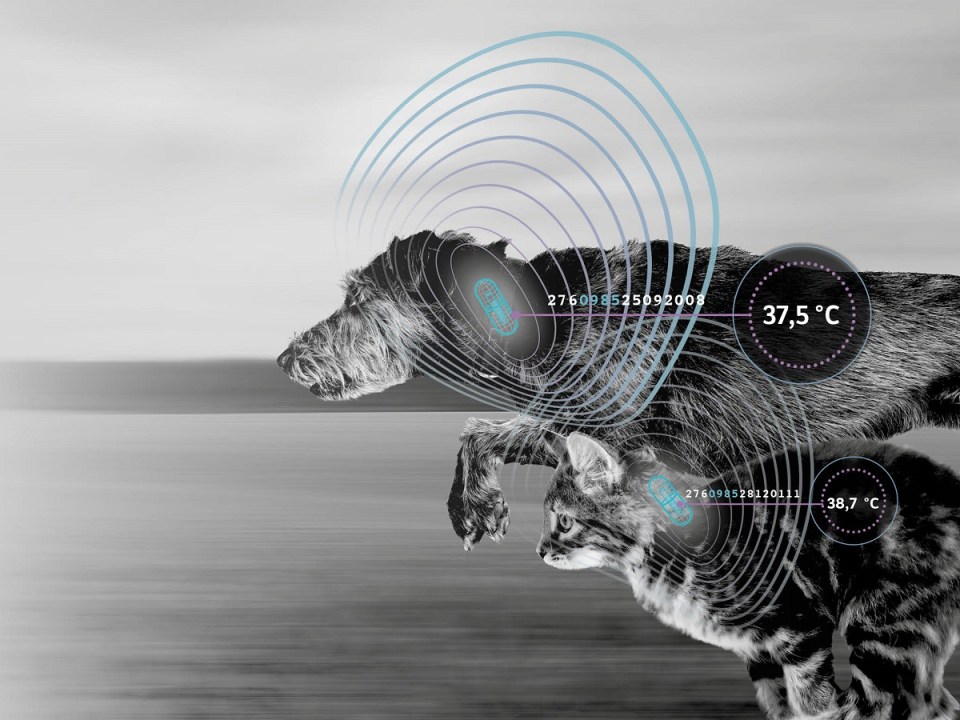
Im Gegensatz zu herkömmlichen Mikrochips liest der Thermochip (Mini) nicht nur die Identifikationsnummer ab, sondern misst gleichzeitig die Temperatur des Tieres an der Implantationsstelle. Dies kann die rektale Temperaturmessung zwar als Goldstandard nicht ersetzen, dient aber der Beobachtung individueller Temperaturschwankungen. Zudem kann die Thermochiptemperatur ein wichtiges Monitoring-Instrument darstellen, da die Messung schneller und stressfreier als bei der rektalen Temperaurmessung erfolgt. So können durch wiederholte Messungen ein individueller Normalbereich der Körpertemperatur jedes Haustieres ermittelt und Abweichungen erkannt werden.
Die Identifikationsnummer ist mit allen herkömmlichen Lesegeräten auslesbar, Temperatur und Identifikation mit den beiden Lesegeräten von MSD: dem Universal Reader fürs schnelle Ablesen in der Praxis und dem robusten Global Reader, der Werte speichert und überträgt.
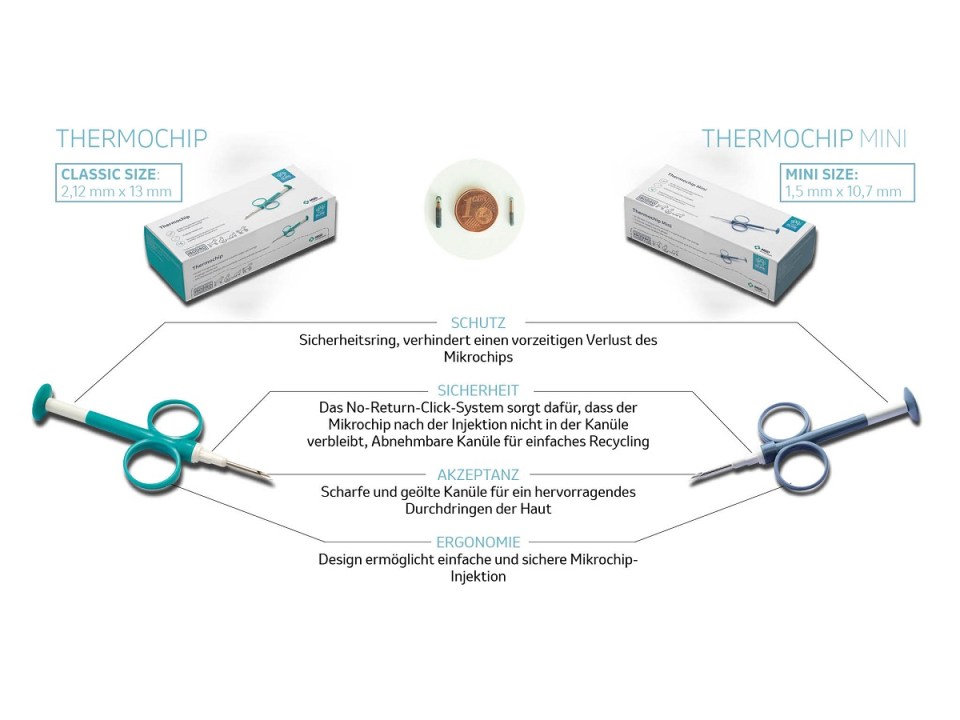
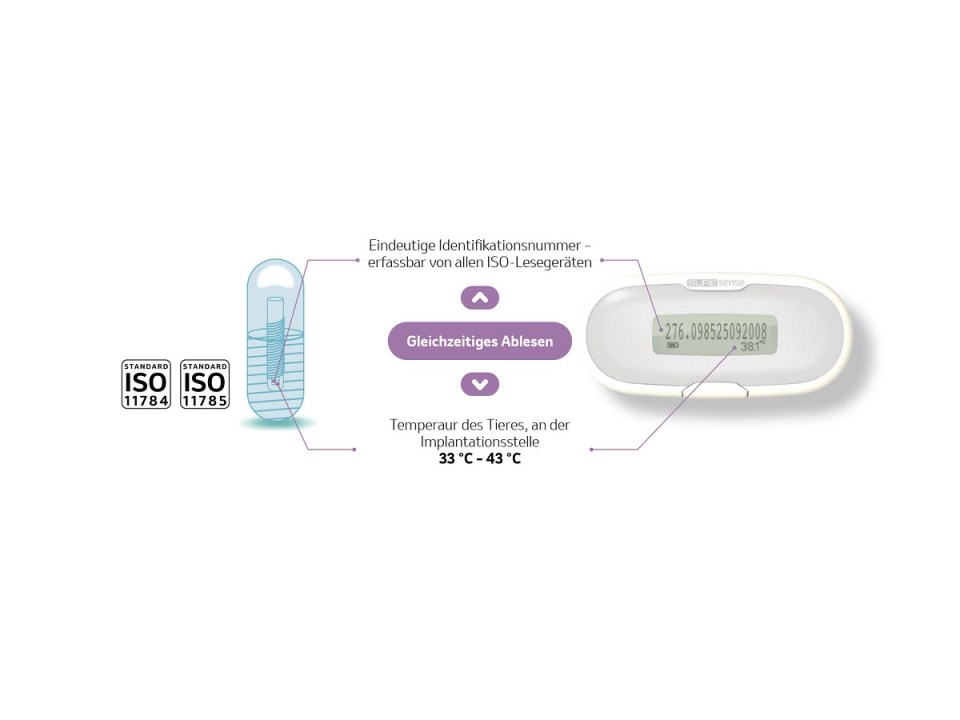
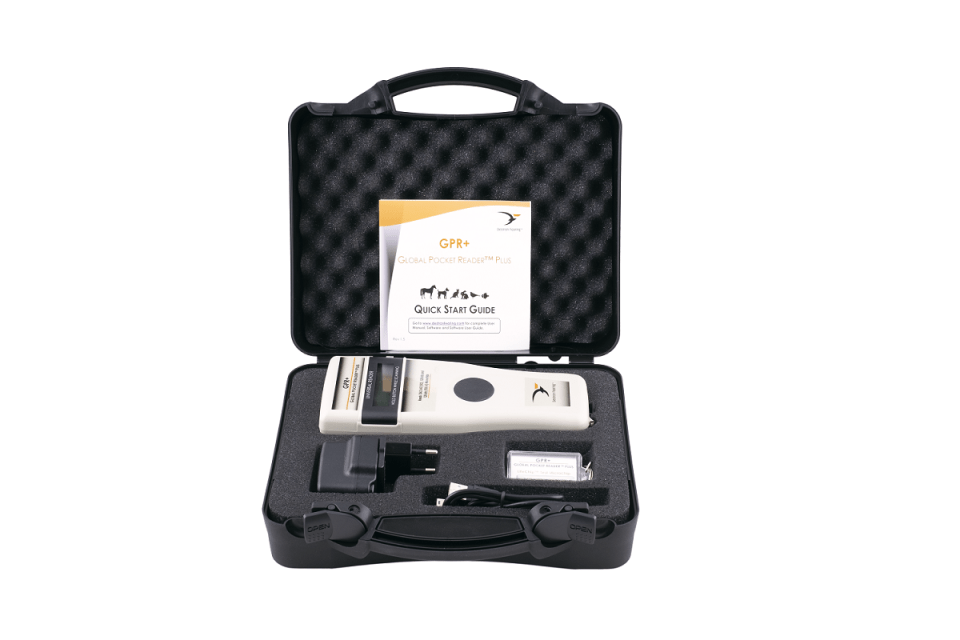
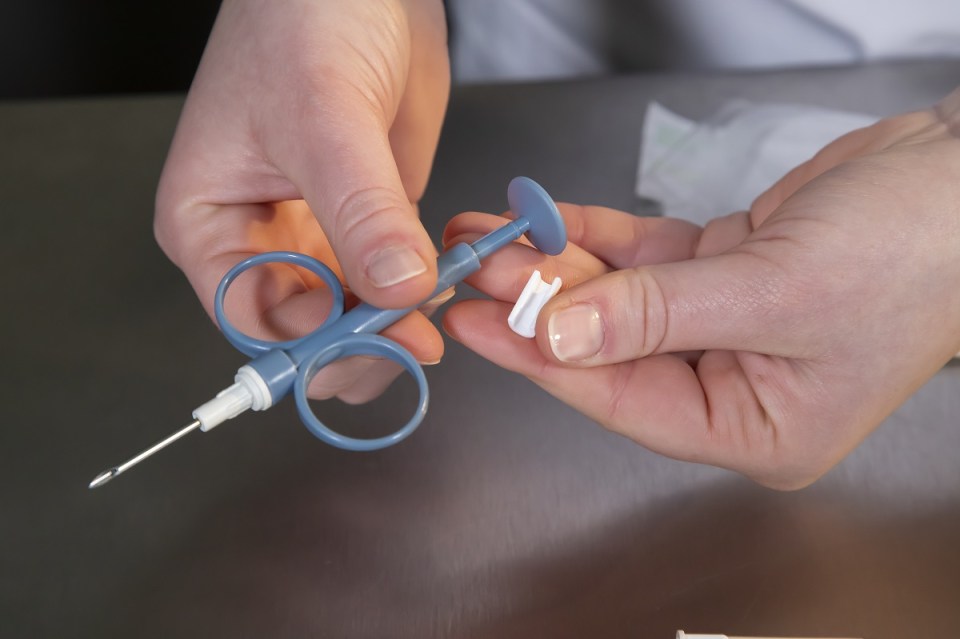
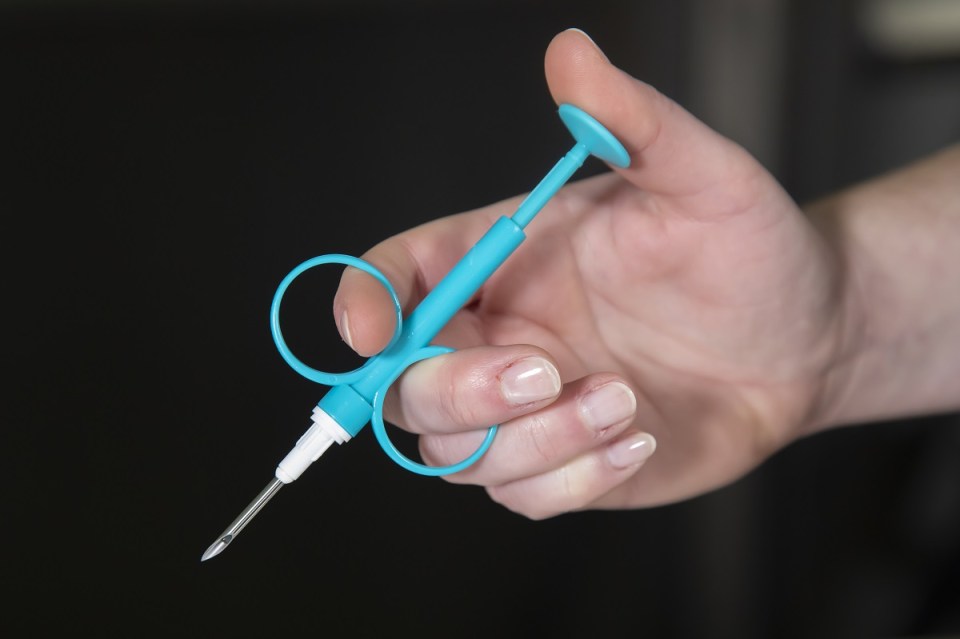
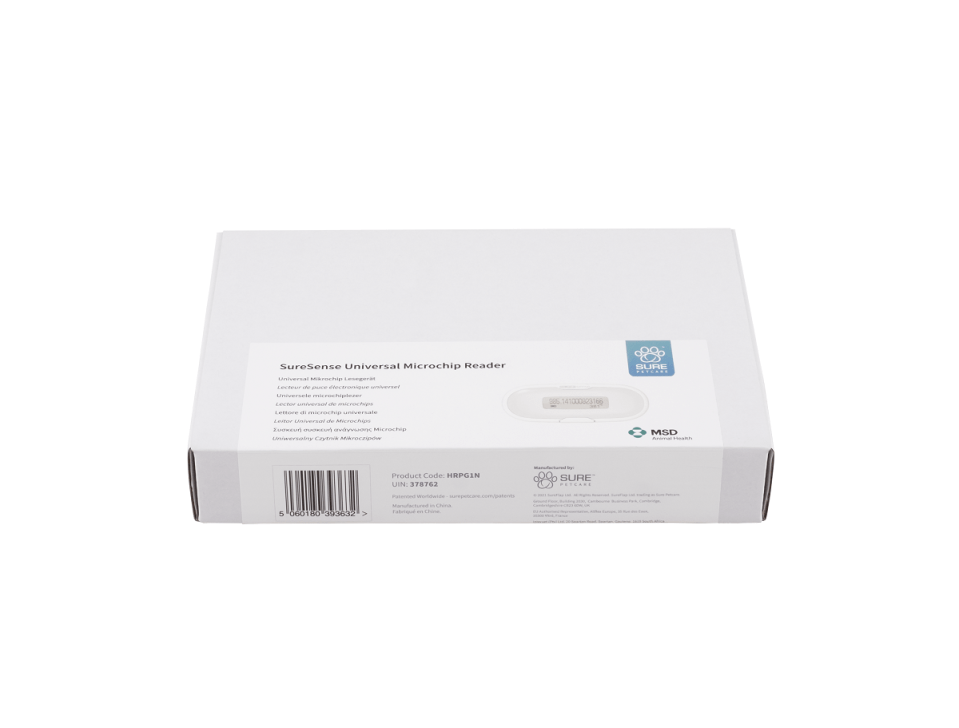
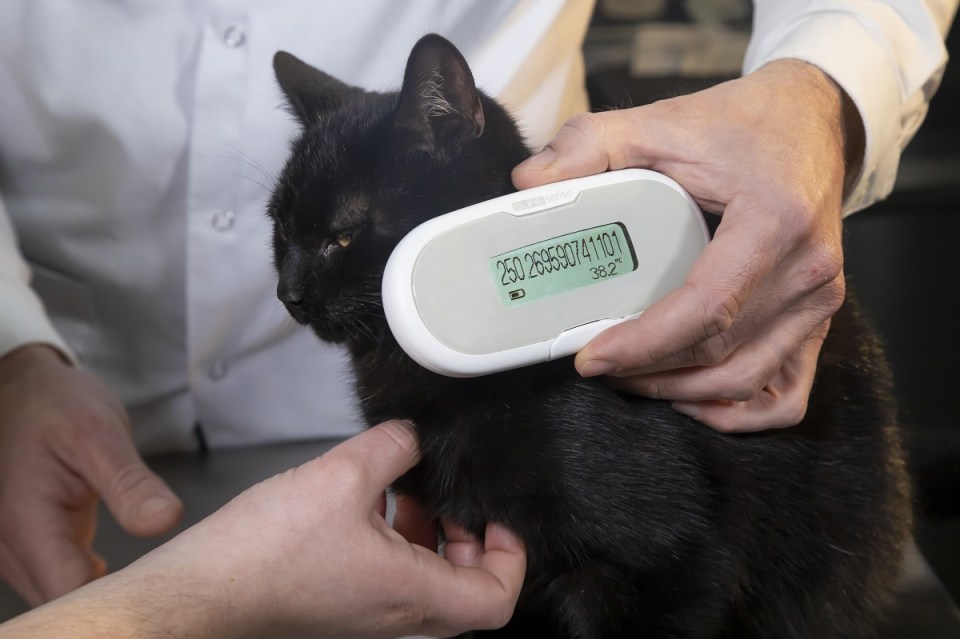
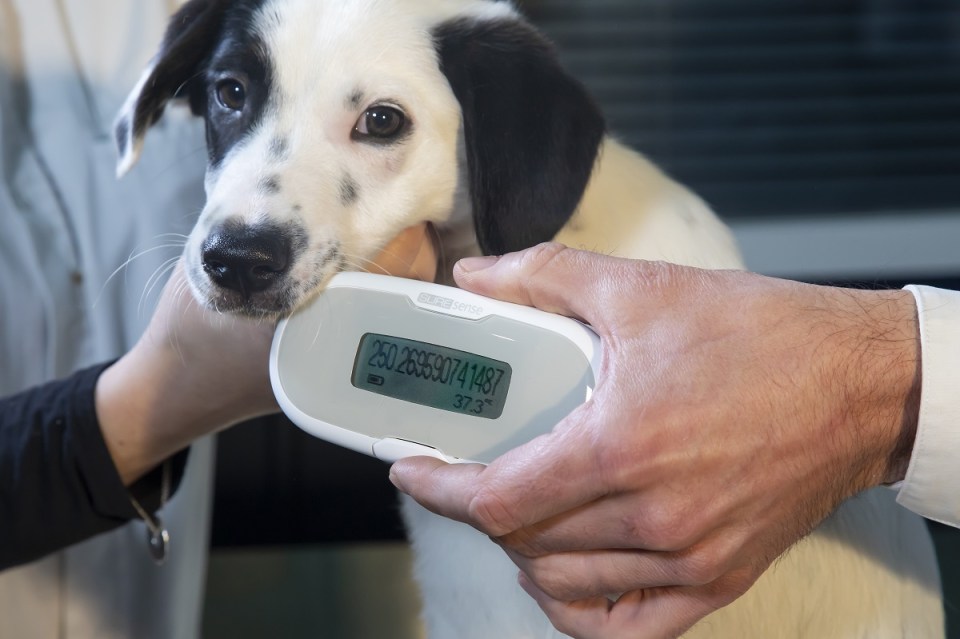
Weiterführende Informationen
Video: Normaltemperatur, was ist das?
Video: Praktischer Einsatz der Thermochips
Video: Thermochip für Hunde
Video: Thermochip für Katzen
FAQs
Der Thermochip funktioniert wie jeder andere klassische Transponder zur Identifizierung von Haustieren. Zusätzlich zu seiner Funktion als Identifikationsmikrochip verfügt der Thermochip über einen integrierten Temperatur-Biosensor, der es ermöglicht, die subkutane Temperatur des Tieres an der Stelle des Mikrochips zu messen. Der überwachte Temperaturbereich: von 33°C bis 43°C.
Die “Mikrochip-Temperatur” kann mit einem kompatiblen Mikrochip-Lesegerät, z. B. dem SureSense® Universal Microchip Reader, erfasst und abgelesen werden.
Mehrere aufeinanderfolgende oder regelmäßig erfasste Temperaturwerte (tagsüber über mehrere Tage, am frühen Morgen und/oder am späten Abend) können einen Trend des individuellen Tierprofils und der täglichen Schwankungen aufzeigen.
Der Thermochip verfügt über ein Paar Transistoren, die in den integrierten Schaltkreis des Chips eingebaut sind. Die Sperrschichtspannungen der Transistoren sind proportional zur Temperatur, was es dem Mikrochip ermöglicht, ein Ausgangssignal zu erzeugen, das ebenfalls proportional zur Temperatur ist. Dieses Signal wird dann in einen digitalen Wert umgewandelt. SureSense® und Global Pocket Reader® Plus lesen den Thermochip und wandeln den digitalen Wert in den entsprechenden Temperaturwert um.
Mehrere nacheinander oder regelmäßig (tagsüber über mehrere Tage, am frühen Morgen und/oder am späten Abend) erfasste Temperaturwerte können einen Trend des individuellen Tierprofils und der täglichen Schwankungen aufzeigen.
Die Mikrochip-Nummer eines Thermochips kann von allen ISO-Transponder-Lesegeräten gelesen werden. Wir empfehlen die Verwendung des SureSense®-Lesegeräts oder des Global Pocket Reader Plus® (GPR+)-Lesegeräts, um den Temperaturwert des Thermochip zu lesen.
Mit unseren Lesegeräten SureSense und GPR+ können wir die Zuverlässigkeit des vom Thermochip übertragenen Temperaturwerts gewährleisten.
Ja, wie alle anderen Mikrochips zur Identifizierung ist auch der Thermochip so konzipiert, dass er während der gesamten Lebensdauer eines Kleintieres oder Pferdes funktioniert. Es ist daher nicht erforderlich, den Mikrochip (oder den Temperatur-Biosensor) während der Lebensdauer des Tieres auszutauschen.
Klassische Thermometer verwenden eine externe Sonde, die die elektronischen Wärmesensoren umschließt, um die Körpertemperatur direkt zu messen. Ein klassisches Thermometer muss kalibriert werden, da die Genauigkeit im Laufe der Zeit aus verschiedenen Gründen, z. B. durch mechanische Stöße, abweichen kann.
Thermochip verwendet eine andere Technologie zur Temperaturmessung, da der Temperatur-Biosensor vollständig in den Mikroprozessor des in Bioglas gekapselten Mikrochips integriert ist, wodurch das Gerät vor mechanischen Stößen geschützt ist.
Nein, der Thermochip ist ein passiver und inerter Identifikationsmikrochip, der eine eindeutige und gesperrte 15-stellige Identifikationsnummer speichert. Der Thermochip (Mini) ist ein zertifizierter und ISO-konformer Identifikationsmikrochip. Er hat keine Batterie und keine andere interne Stromquelle. Die Identifikationsnummer und die Temperatur des Tieres können mit einem geeigneten Lesegerät wie dem SureSense® Universal Microchip Reader oder dem Global Pocket Reader Plus® (GPR+) gelesen werden.
Der Thermochip ist in ein biokompatibles und inertes Material, sog. Bioglas eingekapselt. Dieses wird seit vielen Jahren für die Herstellung klassischer Mikrochips für Haustiere verwendet.
Der in einer steril geprüften Einwegspritze verpackte Thermochip ist vom Internationalen Komitee für Tieraufzeichnungen (ICAR – www.icar.org) zertifiziert und so sicher wie jeder andere Mikrochip zur Identifizierung von Haustieren.
Die Identifikationsnummer des Thermochip ist eine 15-stellige Zahl.
Ein Tierarzt kann den Mikrochip des Haustiers mit dem SureSense-Lesegerät oder dem Global Pocket Reader Plus (GPR+)-Lesegerät scannen und feststellen, ob der Mikrochip die Temperatur anzeigt oder nicht. Wenn er Temperaturdaten anzeigt, handelt es sich um den gleichen Mikrochip wie beim Thermochip oder Thermochip Mini.
Bitte wenden Sie sich an Ihre Tierarztpraxis. Wenn Ihr Haustier bereits einen Mikrochip hat, empfehlen wir Ihnen dringend, Ihr Haustier nicht erneut mit einem Thermochip zu versehen.
Wenn der Mikrochip zur Identifizierung Ihres Haustieres funktioniert, sollte Ihr Haustier nicht erneut mit einem Thermochip versehen werden. Die Implantation eines zweiten kann zu Leseproblemen führen, wodurch die Vorteile des Mikrochips zunichte gemacht werden. Zudem darf nur eine Nummer im EU – Heimtierpass vermerkt sein und muss auf Reisen klar ablesbar sein.
Der Thermochip verwendet einen eingebauten Temperatur-Biosensor, der in den Schaltkreis des Mikrochips integriert ist, so dass die Mikrochipnummer UND die Temperatur des Tieres gleichzeitig gelesen und erfasst werden können.
Der Herstellungsprozess erlaubt es nicht, nur die Temperatur des Tieres anzuzeigen.
Der Thermochip bleibt in erster Linie ein dauerhafter und zertifizierter Identifikationsmikrochip, der nur für “noch nicht identifizierte” Haustiere verwendet werden sollte.
Der Thermochip ist ein Mikrochip zur dauerhaften Identifizierung, der für die Kennzeichnung von Hunden, Katzen, Frettchen und Pferden empfohlen wird. Die Nummerierung sollte je nach den nationalen Vorschriften und/oder der Zieltierart variieren. Dies kann dazu führen, dass verschiedene Produkte für verschiedene Tierarten verwendet werden (jedes Produkt ist für eine bestimmte Art bestimmt).
Der Thermochip Mini ist ein Thermochip in Mini-Größe, der in einer dünnen Nadel (14 Gauge) gepackt ist.
Zudem gibt es Identifikationsmikrochips in Standardgröße – mit einem Durchmesser von 2,12 mm und einer Länge von 13 mm – verpackt in einer 12er-Nadel.
Die Registrierung von Haustieren und die Angaben zum Besitzer erfolgen nach dem gleichen Verfahren wie bei einem klassischen Mikrochip. Beispiele für Datenbanken sind TASSO, Findefix.
Wie beim Menschen ist die Temperaturmessung bei Haustieren ein wichtiger Gesundheitsparameter. Zusammen mit klinischen Symptomen gibt sie Hinweise auf den Gesundheitszustand des Tieres. Bei Hunden und Katzen werden Mikrochips zur Identifizierung subkutan in die linke Seite des Halses implantiert.
Einige neuere Studien, die sowohl beim Menschen als auch bei Haustieren durchgeführt wurden, haben gezeigt, dass die individuelle Normaltemperatur nicht ein nur einmal gemessener Wert ist, sondern eine Bandbreite von Werten, die von der Tageszeit, dem Ort der Messung und dem Alter der Person abhängt (1,2,3,4).
Bei Hunden kann die Temperatur auch an verschiedenen Messorten variieren. In der Tat zeigen einige neuere Studien zum Vergleich verschiedener Temperaturmessverfahren, dass die Körpertemperatur je nach Ort variiert (5). So weisen die Ergebnisse neuerer Untersuchungen darauf hin, dass die Messwerte der Ohr- und Rektaltemperatur bei Hunden und Katzen nicht direkt miteinander verglichen werden sollten, sondern eher mit einem Referenzbereich für die Temperatur an der jeweiligen Stelle (6).
Folglich sollen die mit dem Thermochip erfassten Temperaturen nicht mit den rektalen Werten verglichen werden und diese ersetzen.
Der Thermochip ist eine einzigartige und intelligente Lösung, die die Überwachung der individuellen Temperatur eines Tieres ermöglicht und Tierärzten einen einfachen Zugang zu den Temperaturschwankungen des Tieres bietet.
Der Thermochip ist in erster Linie ein Mikrochip zur Identifizierung von Haustieren, der der Norm ISO 11785 entspricht und die Lesetechnologie FDX B verwendet. Da es sich um einen passiven Hochfrequenz-Identifizierungsanhänger handelt, der mit einer niedrigen
Frequenz von 134,2 kHz arbeitet, können die Lesegeräte in unmittelbarer Nähe arbeiten, wobei die Lesereichweite im Durchschnitt bis zu 10 cm beträgt.
Eine größere Lesereichweite (bis zu 20 cm) kann beobachtet werden, hängt aber nur von der Position des Mikrochips im Tier UND von der Leistung/Qualität des verwendeten Lesegeräts ab.
Eine unabhängige Laborstudie wurde durchgeführt, um die Genauigkeit des Mikrochips bei der Temperaturmessung anhand einer kalibrierten Methodik zu bewerten.
Die Studie bestand aus der Erfassung der Mikrochip-Temperaturwerte von 10 Thermochips (die nach dem Zufallsprinzip aus zwei verschiedenen Produktionschargen entnommen wurden) und von 4 Thermometern verschiedener Marken, die alle in ein Kalibrierungsbad gelegt wurden. Die Temperaturwerte wurden in Abständen von 0,5 °C zwischen 33 °C und 43 °C erfasst.
Die Durchschnittswerte der erfassten Mikrochip-Temperaturen und der von den 4 Thermometern gemessenen Werte waren recht ähnlich, mit einer Differenz zwischen 0°C und 0,18°C.
Der Thermochip zeigt die Temperatur des Tieres an der Implantationsstelle an. Bei Haustieren wird der Thermochip subkutan platziert. Jeder Faktor, der die subkutane Temperatur beeinflussen kann, wirkt sich auch auf die Thermochip-Temperatur aus. Sowohl Frost als auch eine Wärmedecke (in Kontakt mit der Haut über dem Thermochip) können sich auf die Temperatur des Thermochips auswirken. Dies ist ein weiterer Grund, warum empfohlen wird, Temperaturschwankungen mit dem Thermochip zu untersuchen und nicht den Wert selbst.
Bei Pferden ist die Injektion des Thermochip tiefer, was zu einem geringeren Einfluss der Außentemperatur auf die Thermochip-Temperatur führt.
Zwei neuere Studien (7,8) haben gezeigt, dass die MRT mit einem 1,0-T-Magneten nicht zu einem Ausfall des Mikrochips führen sollte. Die erste Studie (7) kommt zu dem Schluss, dass die getesteten Mikrochips kein Sicherheitsrisiko für Patienten darstellen, die sich einer MR-Bildgebung mit diesem 1T-System unterziehen. Die zweite Studie(8) kommt zu dem Schluss, dass der Ort der Bildgebung, die durchschnittliche MRT-Scanzeit, die Marke oder die Häufigkeit des Mikrochips keinen Einfluss auf die Funktionalität des Mikrochips hatten.
Diese beiden jüngsten klinischen Studien zeigen, dass die MRT die Funktionalität der implantierten Mikrochips nicht beeinträchtigt (die Mikrochipnummern wurden erfolgreich erkannt und gelesen). Auf der Grundlage dieser Ergebnisse und der Tatsache, dass die Temperaturerkennungsfunktion und die Mikrochipnummer zwei untrennbare Datensätze sind, die im selben integrierten Schaltkreis enthalten sind, können wir schlussfolgern, dass die MRT keine potenzielle Ursache für das Versagen des temperaturerkennenden Mikrochips sein sollte.
Eine Thermochip-Mikrochipnummer kann von allen ISO-Mikrochip-Lesegeräten gelesen werden, genau wie jeder andere Mikrochip. Wir empfehlen die Verwendung des SureSense®-Lesegeräts oder des Global Pocket Reader Plus® (GPR+), um den Temperaturwert des Thermochip zu lesen.
Zwar können auch andere Lesegeräte die Temperatur ablesen (z.B. Halo®), aber es ist nicht bekannt, wie genau diese das vom Thermochip gesendete Signal interpretieren können.
Der Thermochip wird von den gängigen Katzenklappen erkannt und kann für die chipgesteuerte Öffnung eingesetzt werden.
1. Waalen,J.; Buxbaum. Joel N ( 2011) Is older colder or colder older? The association of age with body temperature in 18,630 individuals. J Gerontol A Biol Sci Med Sci. 2011 May;66(5):487-92 Link: 10.1093/gerona/glr001
2. Gomolin IH, Aung MM, Wolf-Klein G, Auerbach C. Older is colder: temperature range and variation in older people. J Am Geriatr Soc. 2005 Dec; 53 (12):2170-2 Link: 10.1111/j.1532-5415.2005.00500.x.
3. Refinett R. et al., Daily rhythmicity of body temperature in the dog. J Vet Med Sci. 2003;65(8):935-7.
a. Link: https://pdfs.semanticscholar.org/2368/83c21ca3b0d282e37a754d6c4accc8ca040c.pdf?_ga=2.264825359.1281255364.1666797836-974609188.1666797836
4. Piccione G. et al., The daily rhythm of body temperature, heart and respiratory rate in newborn dogs. J Comp Physiol. 2010; 180(6):895-904.
5. SureTemp Plus User Manual (page 7) – https://www.welchallyn.com/content/dam/welchallyn/documents/upload-docs/Training-and-Use/Clinical%20In-Service%20Presentations/sure-temp-plus/SureTemp-Plus-User-Manual.pdf
6. Sousa, M. 2016. Measuring body temperature: how do different sites compare. Vet Rec 178:190-1.
7. Martin A. Baker, Iain MacDonald. Evaluation of magnetic resonance safety of veterinary radiofrequency identification devices at 1T. 2010 Veterinary Radiology & Ultrasound, vol. 52, No.2, 2011, pp 161-167. Link: 10.1111/j.1740-8261.2010.01762.x
8. Katherine A. Haifley, Silke Hecht. Functionality of implanted microchips following magnetic resonance imaging. JAVMA, Vol 240, No5, March 1, 2012.
https://doi.org/10.2460/javma.240.5.577
